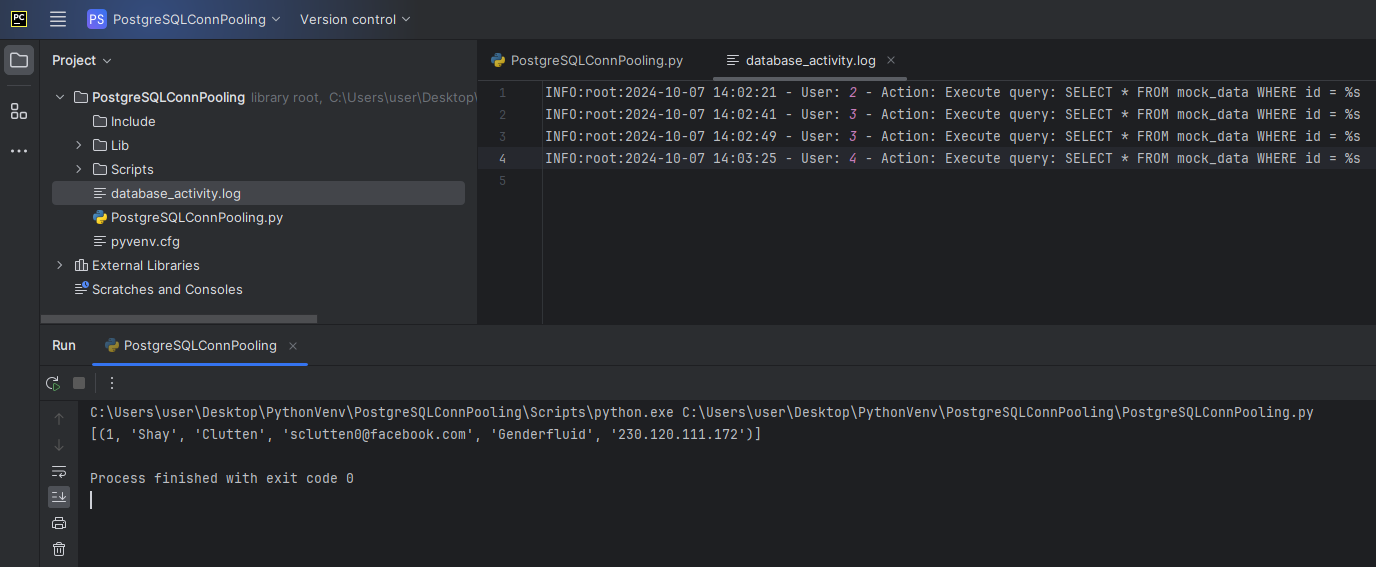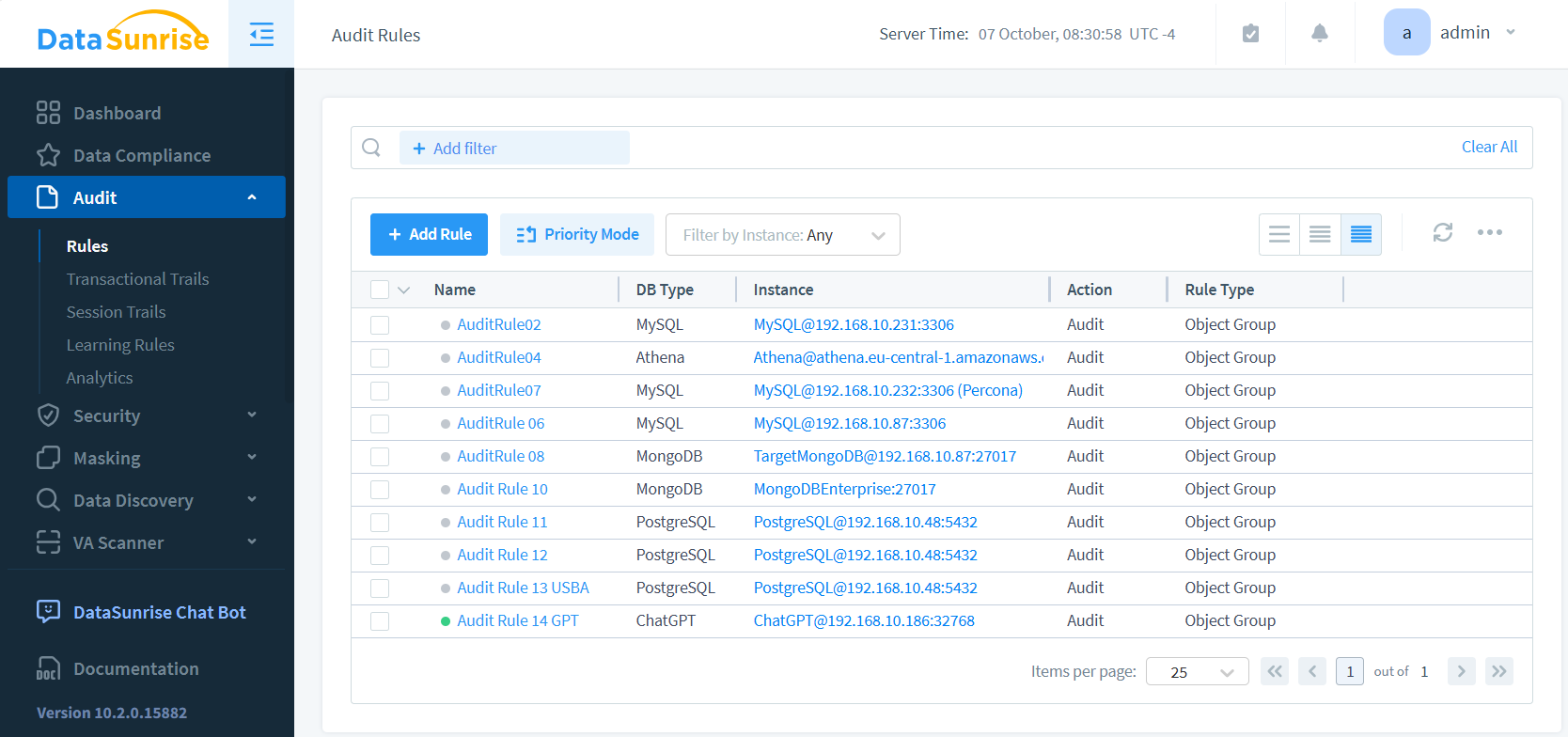
PostgreSQL Database Activity History

Introduction
In the digital age, data is the lifeblood of organizations. PostgreSQL, a powerful open-source database system, plays a crucial role in managing this valuable asset. PostgreSQL Database Activity History tools are essential for maintaining security, ensuring compliance, and optimizing performance.
Data breaches are becoming increasingly costly. In 2024, the global average expense of a single data breach reached a record high of $4.88 million. This figure represents a 10% jump from the previous year’s costs. Such escalating financial risks underscore the critical importance of robust database security measures.
The Importance of Database Activity History
Tracking database activity history serves several crucial purposes:
- Security: Detect and prevent unauthorized access or malicious activities.
- Compliance: Meet regulatory requirements like HIPAA and GDPR.
- Performance optimization: Identify bottlenecks and inefficient queries.
- Problem-Solving: Identify and fix problems promptly.
By implementing robust auditing mechanisms, organizations can protect their data assets and maintain trust with their stakeholders.
Implementing Audit at the Application Level
Application-level auditing provides granular control over database activity tracking. It allows developers to capture contextual information and correlate database actions with user activities. This approach offers a deeper understanding of how users interact with the database, enabling more effective security monitoring and performance optimization.
By implementing auditing at the application level, organizations can tailor their logging to specific business needs and regulatory requirements. It also helps find suspicious patterns or unauthorized access attempts that standard database logging might miss. Let’s explore how to implement this using Python and connection pooling, a powerful combination that enhances both auditing capabilities and overall database performance.
What is Connection Pooling?
Connection pooling is a technique that manages a cache of database connections. It reuses existing connections instead of creating new ones for each database operation. This approach offers several benefits to database systems and applications.
By reducing connection establishment overhead, connection pooling significantly improves performance, allowing for faster query execution and response times. It also enhances resource management by limiting the number of concurrent database connections, preventing overload and ensuring stable system operation.
Furthermore, connection pooling supports enhanced scalability, enabling applications to handle more concurrent users with fewer resources. This efficiency is particularly valuable in high-traffic environments or systems with limited hardware capabilities. Overall, connection pooling serves as a crucial optimization strategy for database-driven applications, balancing performance, resource utilization, and scalability.
Implementing Audit with Connection Pooling in Python
Here’s an example of how to implement application-level auditing using Python and connection pooling:
import psycopg2
from psycopg2 import pool
import logging
from datetime import datetime
import threading
# Create a connection pool
connection_pool = psycopg2.pool.SimpleConnectionPool(
1, 20,
host="localhost",
database="mydatabase01",
user="postgres",
password="pass"
)
# Set up logging
logging.basicConfig(filename='database_activity.log', level=logging.INFO)
def audit_database_action(action, username):
timestamp = datetime.now().strftime("%Y-%m-%d %H:%M:%S")
logging.info(f"{timestamp} - User: {username} - Action: {action}")
def execute_query(query, params=None, username="system"):
conn = connection_pool.getconn()
try:
with conn.cursor() as cur:
cur.execute(query, params)
audit_database_action(f"Execute query: {query}", username)
return cur.fetchall()
finally:
connection_pool.putconn(conn)
# Example usage
results = execute_query("SELECT * FROM mock_data WHERE id = %s", (1,), "4")
print(results)This code demonstrates:
- Creation of a connection pool
- Implementation of an audit function
- Execution of queries using pooled connections
- Logging of database actions with user context
By integrating this approach into your application, you can maintain a comprehensive history of database activities.

Connection Pooling Benefits
Connection pooling offers several advantages for PostgreSQL database activity logging and overall performance. Let’s explore these benefits:
- Consistent tracking: Connection pooling maintains a set of reusable connections. This allows for more consistent and comprehensive logging across all database interactions.
- Performance optimization: By reducing the overhead of creating new connections, pooling improves performance. This means you can implement more detailed logging without significantly impacting system speed.
- Resource management: Pooling limits the number of concurrent database connections. This makes it easier to track and audit all active sessions without overwhelming the database or logging system.
- Contextual information: With a pool, you can associate metadata (like user IDs or application names) with each connection. This enriches your logs with valuable context.
- Simplified error tracking: When problems happen, connection pooling helps trace issues to specific connections or users.
- Scalability: As your application grows, connection pooling helps manage increased database activity. This scalability extends to your logging capabilities as well.
- Transaction grouping: Pooled connections often align with transaction boundaries, making it easier to log complete units of work.
Native PostgreSQL Auditing Tools
While application-level auditing is powerful, PostgreSQL also offers built-in tools for tracking database activity:
- pg_stat_statements: Collects statistics on SQL statement execution.
- Log_statement: Configures which SQL statements are logged.
- pgAudit: Provides detailed session and object audit logging.
These native tools complement application-level auditing and offer additional insights into database activity.
The Role of Third-Party Software in Database Security
Third-party software plays a crucial role in enhancing PostgreSQL security and compliance. These tools offer:
- Real-time monitoring and alerting
- Advanced access control and encryption
- Automated compliance reporting for HIPAA, GDPR, and other regulations
- Centralized management of multiple database instances
By combining native PostgreSQL features with third-party solutions, organizations can create a robust security framework.
Ensuring HIPAA and GDPR Compliance
Regulations like HIPAA and GDPR impose strict requirements on data protection and privacy. Here’s how database activity history helps with compliance:
HIPAA Compliance
For healthcare organizations:
- Track all data access and modifications
- Implement access controls and user authentication
- Maintain detailed audit logs for at least six years
GDPR Compliance
For organizations handling EU citizens’ data:
- Implement data minimization practices
- Provide mechanisms for data subject rights (e.g., right to be forgotten)
- Ensure proper consent management and data processing documentation
Robust database activity tracking is essential for meeting these regulatory requirements.
Best Practices for PostgreSQL Activity Monitoring
To effectively monitor PostgreSQL database activity:
- Implement a least-privilege access model
- Regularly review and update user permissions
- Use strong authentication methods, such as two-factor authentication
- Encrypt data at rest and in transit
- Implement a centralized log management system
These practices, combined with proper auditing, create a strong foundation for database security.
Challenges in PostgreSQL Activity Monitoring
Despite available tools, some challenges remain:
- Performance impact of extensive logging
- Storage requirements for long-term audit data retention
- Complexity of correlating database activity with application-level events
- Balancing security needs with user privacy concerns
Organizations must carefully consider these factors when implementing database activity monitoring solutions.
Future Trends in Database Activity Monitoring
As technology evolves, we can expect:
- AI-powered anomaly detection in database activity
- Increased integration of database security with cloud services
- Enhanced visualization tools for analyzing activity patterns
- Automated data compliance reporting and remediation suggestions
Staying informed about these trends will help organizations adapt their database security strategies.
Conclusion
Monitoring PostgreSQL database activity history is crucial for maintaining security, ensuring compliance, and optimizing performance. By leveraging application-level auditing, connection pooling, native PostgreSQL tools, and third-party solutions, organizations can create a comprehensive framework for tracking database activities.
Remember, database security is an ongoing process that requires constant vigilance and adaptation to new threats and regulations. Stay informed about the latest security best practices and tools to keep your PostgreSQL databases safe and compliant.
DataSunrise: Advanced PostgreSQL Audit Capabilities
DataSunrise offers cutting-edge PostgreSQL audit capabilities that complement native tools and enhance overall database security. Using proxy technology, DataSunrise provides comprehensive session auditing for PostgreSQL and its components. This powerful solution offers:
- Real-time monitoring and alerting
- Detailed activity logging and reporting
- Advanced access control and data masking
- Automated compliance management for HIPAA, GDPR, and other regulations
- Vulnerability assessment and threat detection

DataSunrise’s flexible tools go beyond simple auditing, offering a complete database security suite that includes activity monitoring, data protection, and compliance management.
Visit our website to schedule a virtual demonstration. You can see how DataSunrise’s PostgreSQL security solutions work. Discover how DataSunrise can help you achieve robust database security and seamless compliance management for your PostgreSQL environments.
